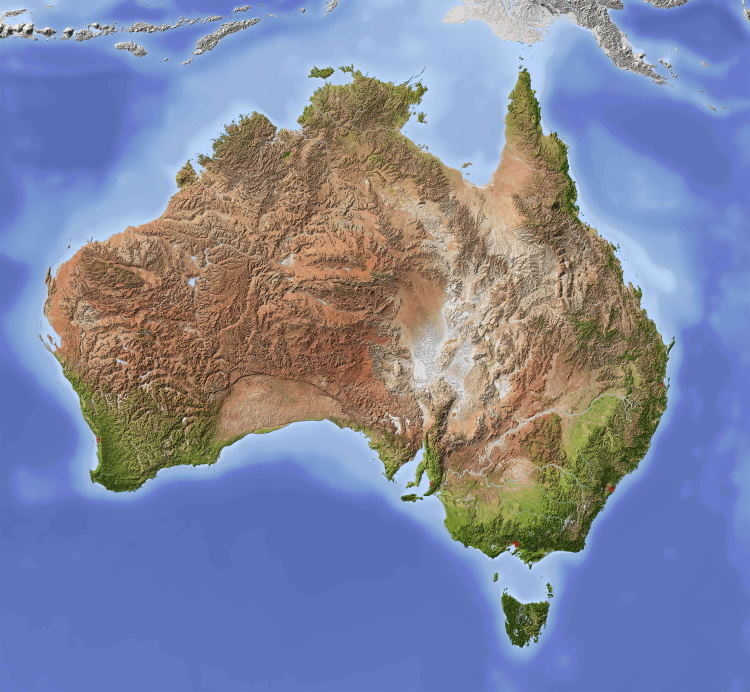Op-ed by Peter Tesch, former deputy secretary of Defence and Australian ambassador to Russia and Germany.
…
Despite avowing China to be the biggest strategic threat to US interests, the Trump administration is hitting its Indo-Pacific partners with punitive tariffs; gutting aid programs throughout the region; sowing doubt about its commitment to Taiwan’s security; making nice with authoritarians from Pyongyang to Moscow; and pressuring allies, including Australia, to lift defence spending, preferably on American weapons and platforms.
…
Through whim and volatility, and without obviously extracting any quid pro quo, America is surrendering the collective Western strategic bridgehead which, supported by staunch allies like Australia, it had fought hard and paid dearly to win and sustain for many decades.
…
We don’t have sufficiently sober and honest public conversations about the strategic threats we face and their implications for our national security and resilience. This is the prerequisite for the social licence government requires to spend what we must to ensure proper military and industrial preparedness, commensurate with the tasks we expect the Australian Defence Force to perform now, as well as in an ever more uncertain future. For some, the dissonance emanating from Washington is just the “outrage machine” of performative US domestic politics in overdrive, with America again bluntly exercising the economic and security leverage it has had, but not always applied, since the end of the Cold War.
But our adversaries are emboldened, reassured in their conviction that the West is in terminal decline and democratic governments are too timid to take hard and costly decisions that provoke short-term public discontent.
…
Even as they try to avoid disfavour in DC, governments across the region feel driven to hedge the risk of future US unreliability by increasing their economic and political engagement with China.
Among those attending last month’s Victory Day parade in Beijing – where the Chinese Communist Party distorted history by appropriating the nationalist Kuomintang-led struggle against Imperial Japan – were the presidents or prime ministers of Vietnam, Malaysia, Indonesia, and India.
…
Nonetheless, Australia is forging stronger military-industrial ties with key regional players, including through the selection of Japan’s Mogami-class frigates and South Korea’s Huntsman self-propelled howitzers and ammunition carriers. This builds on our deepening political collaboration and joint military activities, in particular our combined naval transits in the South China Sea with a diverse array of allied navies, including Canada, The Philippines, Japan and France.
…
The government’s recent announcements of a $12bn investment in the HMAS Stirling naval base and Henderson naval precinct near Perth, as well as the $1.7bn for the Ghost Shark uncrewed underwater vehicle, are welcome and not before time. They should not be downplayed in the febrile fulminating which passes for public commentary about our defence. Even so, we are far from where we should be by the measures we have set ourselves.
Our biggest challenge is that of scale. A nation of 27 million people, with a professional military of roughly 60,000 people and a manufacturing base accounting for just 5 per cent of GDP, must think realistically about what can be achieved and how quickly, and at what sustainable cost.
Better integrating our defence industry into regional and global networks is vital if we are to build and sustain greater self-reliance and contribute proportionally to the collective AUKUS industrial effort.
…
Conclusion of the Australia-EU Security and Defence Partnership, possibly this year, will enable Australian business to bid in partnership with European companies for access to the new €150bn ($267bn) Security Action for Europe (SAFE) loan instrument for joint procurement.
European firms like Thales, Rheinmetall, Kongsberg, and SAAB are Australian defence primes, whose products are meeting not only Australia’s military needs, but are being exported to other countries. The EU became a strategic partner of ASEAN in 2020 and launched its EU Strategy for Cooperation in the Indo-Pacific in 2021. It signed security and defence partnerships with Japan and the ROK in 2024.
A new tier of innovative and resilient European nations, notably Poland and the Nordic and Baltic countries (the “NB8”), has crystallised. Deeply integrated into the Ukraine defence innovation ecosystem and, like Australia, having strong connections to the US defence base, they are outward-looking, activist, and clear-eyed on China and Russia.
…
The Partnership for Indo-Pacific Industrial Resilience … supports greater collaboration between Europe and Australia. It aims to create a trusted ecosystem among industry, capital providers, and defence customers to foster information exchange, technical co-operation, supply chain resilience, and co-production and co-sustainment. Its 14 members span the Euro-Atlantic and Indo-Pacific regions and include key European countries and Australian partners like Japan and the ROK.
…
Good writeup.
One thing that I would add to, is I would personally also consider buying drones from Ukraine. Production capabilities in Ukraine are limited by money right now, not by physical factories and such.
And at least for ground combat right now, Ukraine’s weaponry seems to be unmatched. The war changed too much over the course of 3+ years, the old strategies don’t work anymore. Drones really excel in terms of cost and effect. Small drone boats destroy large Russian ships, to a point that none of the latter can be seen in the Black Sea.
And by spending with Ukraine, you also help them fight off the invasion that they’re under.I would personally also consider buying drones from Ukraine
Seems that happens already in some way: Ukraine offers drone tech and battlefield expertise to Australia (archived article link)

